The Ultimate Guide: Financial Service Branding

In the highly competitive financial service Industry, creating a robust brand identity and awareness is crucial to standing out, enduring, and prospering in the long run.
Therefore, this guide aims to provide a super holistic and actionable sense of building a strong brand that your target audience engages with and trusts!

So, let’s get straight to it and guide you into creating your blueprint for Digital Branding Success!
Table of Contents:
5) Conclusion
1) Determine Your Optimal Brand Identity– Market Research
For an effective branding campaign to take place successfully, a clear idea must be made on what kind of identity and positioning your business wants to take up in the dynamic financial service market. To achieve a clear understanding of your desired brand identity, let's go through the following steps, shall we?
a) Create Your Buyer's Persona
Identifying key personas that represent the ideal customer helps your business accurately establish effective branding & marketing strategies around it; because your business would know the behaviors and needs of its ideal customers perfectly!
To determine the ideal customer, demographic analysis must first be performed on the highest converting segment of your audience. Try to understand their age & generation, income levels, and geographical location.
Next, behavioral insights can be studied on that desired Demographic, by analyzing their digital behavior, and spending & saving habits.
A prime example is the case with GoHenry. They understood their ICP very well (such as them being Volatile Mobile users coming through Social Media). Therefore, GoHenry leveraged Mobile SEO and demographic-appropriate marketing strategies that orchestrated their meteoric rise over the years!
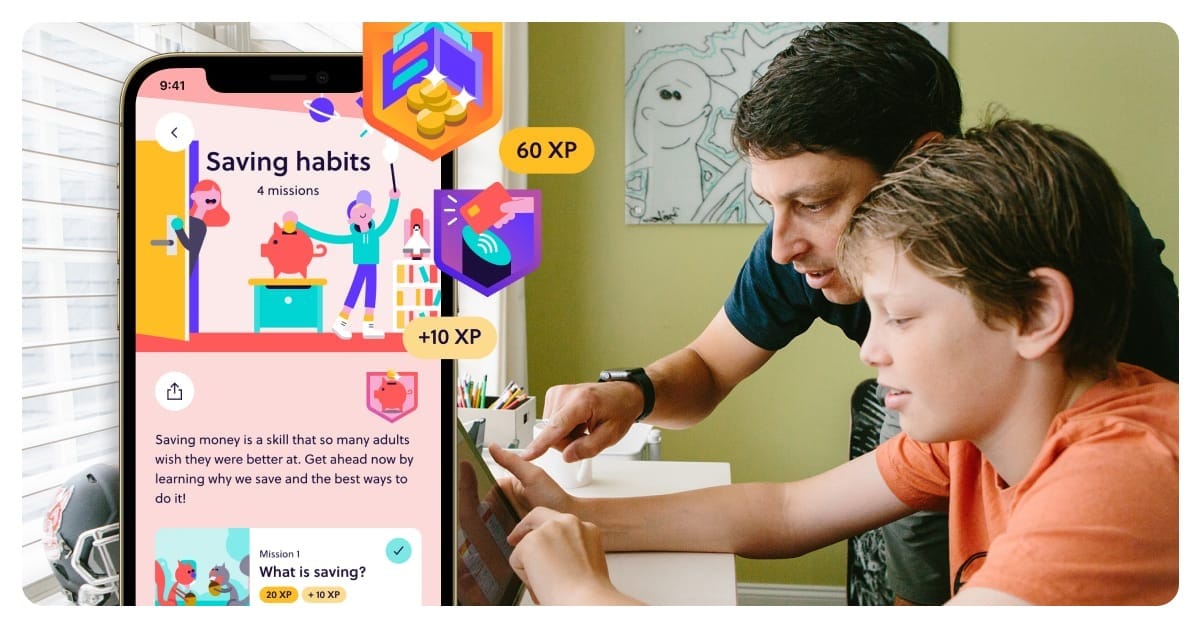
Using both demographic analysis and behavioral insights, you can develop a comprehensive understanding of the ideal buyer's persona for your financial service business.
b) Understand Your Business's Current Status
To confidently build a brand that encourages growth, you must ensure you have a critical view of your business's current positioning. We'll be exploring the given steps needed to craft a more reliable and appropriate brand identity moving forward!
Start with a SWOT analysis that identifies key aspects of your business's performance. You should discover your Target audience's preferences & pain points, competitive positioning & differentiation, customer satisfaction & brand perception, and market trends & emerging opportunities.
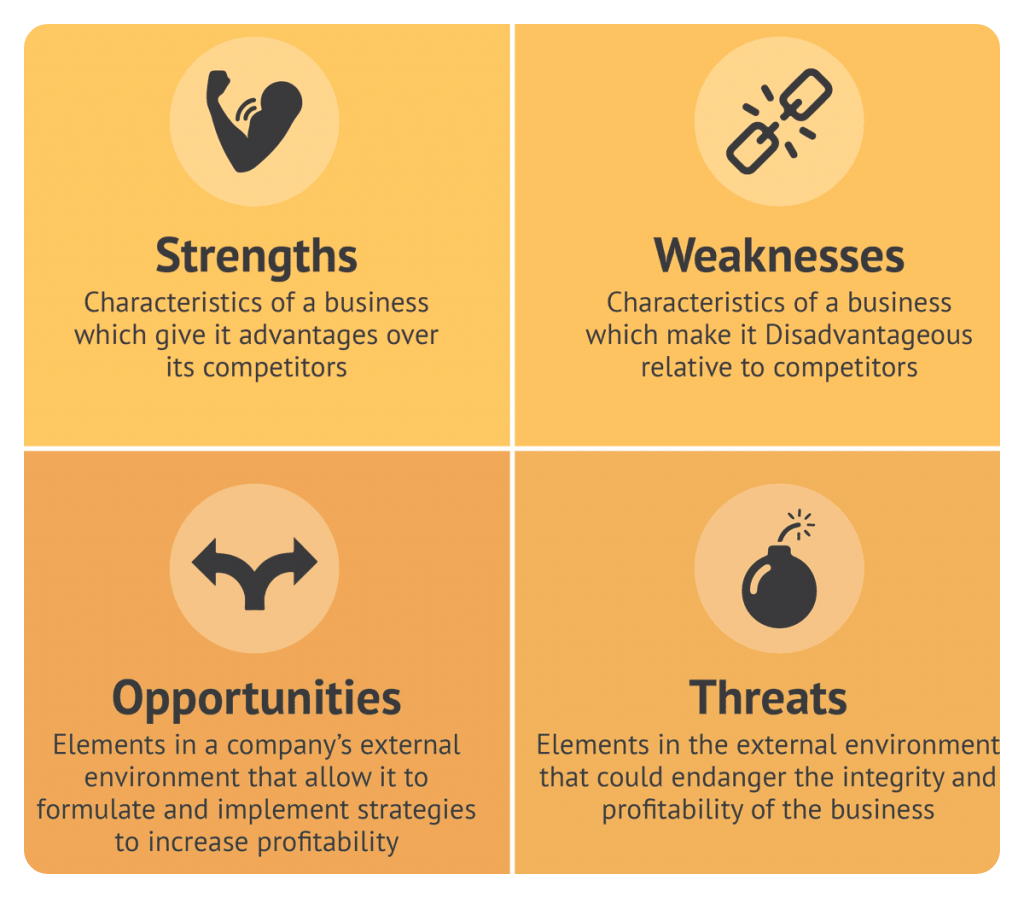
Including a PESTLE analysis would be a great bonus to your market research. Mapping out the political, economic, social, technological, legal, and environmental forces in your market, would help in assembling a more in-depth overview of your opportunities and threats present currently.
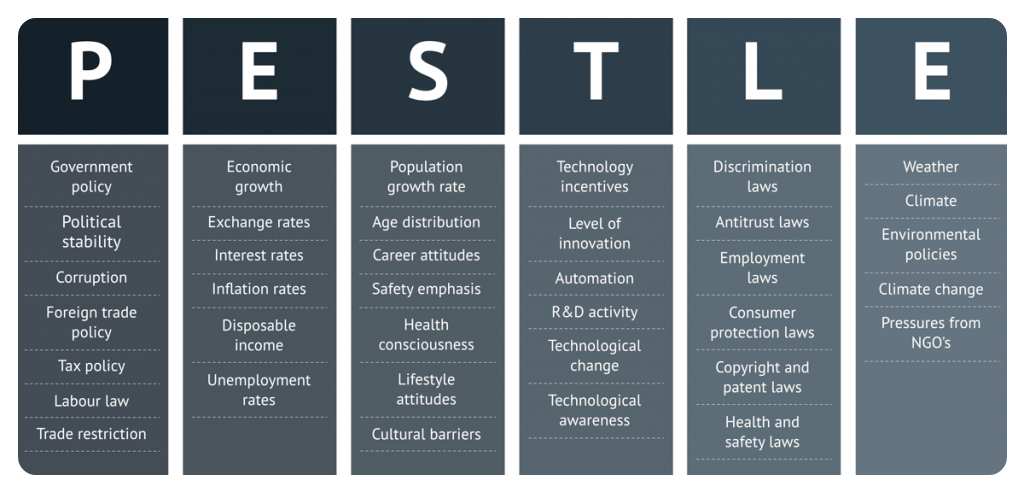
Now, it is time to discover all these forces and aspects. Utilize surveys, questionnaires, focus groups, and secondary research. These data-collecting tools create a good and encompassing idea of the various paths your business must strive for growth!
c) Competitor Analysis
The most efficient path or strategy may not always be the best, as the competitive landscape in your industry plays a complex role in the given gaps and conditions that are present in the market. Therefore to determine the most optimal strategy, a competitor analysis must be performed.
To perform a good competitor analysis, you must first analyze the competitors positioning in the market. This involves examining their strengths, weaknesses, market positioning, and key differentiators.
One of the best ways to analyze your competitor's strengths and weaknesses is through customer reviews/surveys, as customers can give unfiltered and direct insights into the competitor's service delivery. This way you can find out what they are doing right and wrong, and derive valuable opportunities from them.

Looking at employee reviews through Glassdoor and Indeed helps you gauge the company's market positioning, by understanding how they may attract and retain top talent, foster productivity and innovation, maintain such a prestigious corporate reputation, etc; and likewise for their faults. This would help guide you in developing a better market positioning that matches your business's brand identity.
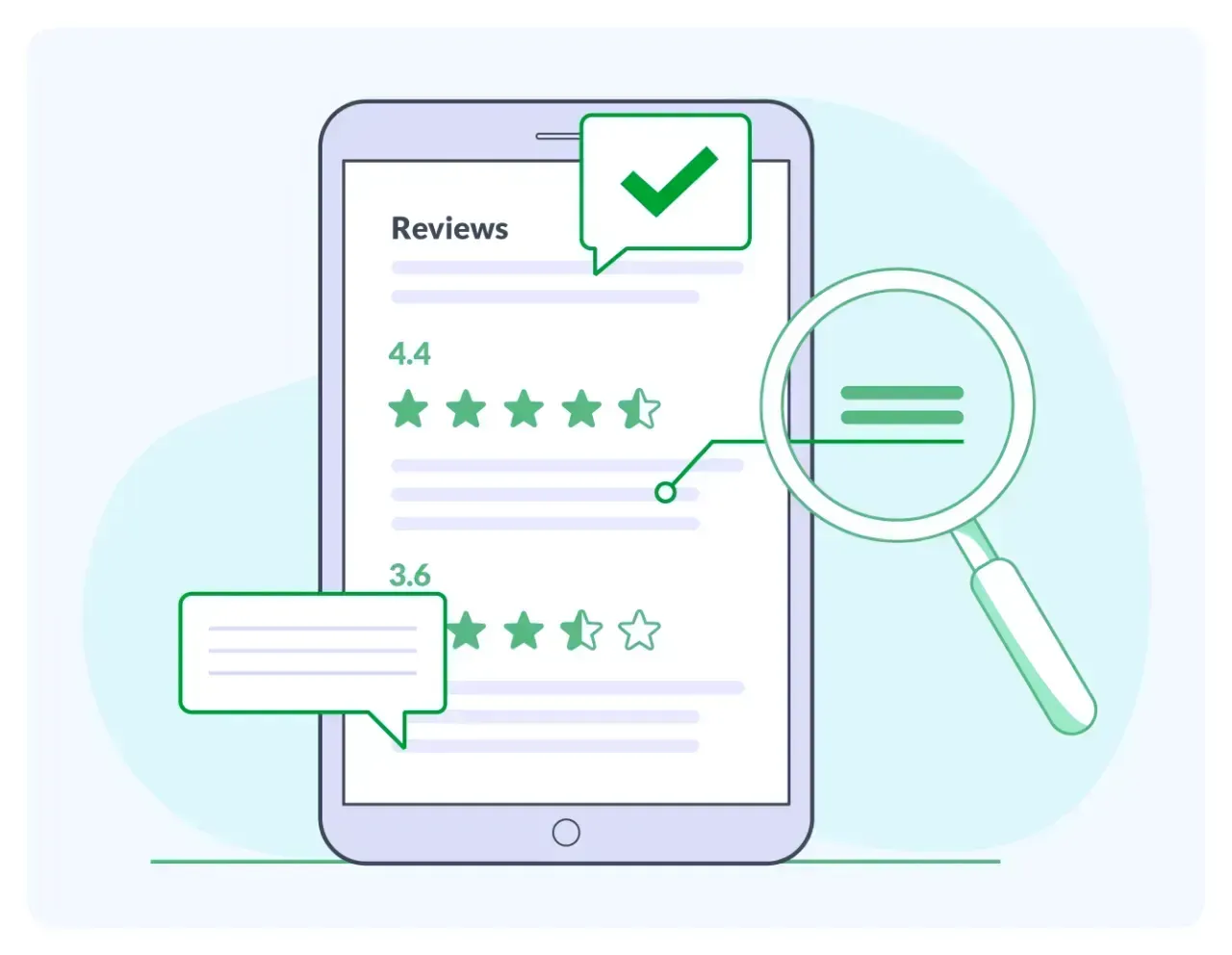
Conducting SEO and keyword analysis (if the competitors have a blog) is another great way to assess their market positioning.
By understanding what customer profile/demographic they mainly target, and how they brand themselves online, you can discover the various opportunities and gaps for your optimal target customer profile.
You can also uncover their clever SEO strategies that can be used to improve your conversion rates, boost your branding efforts, and remain competitive in the digital space.
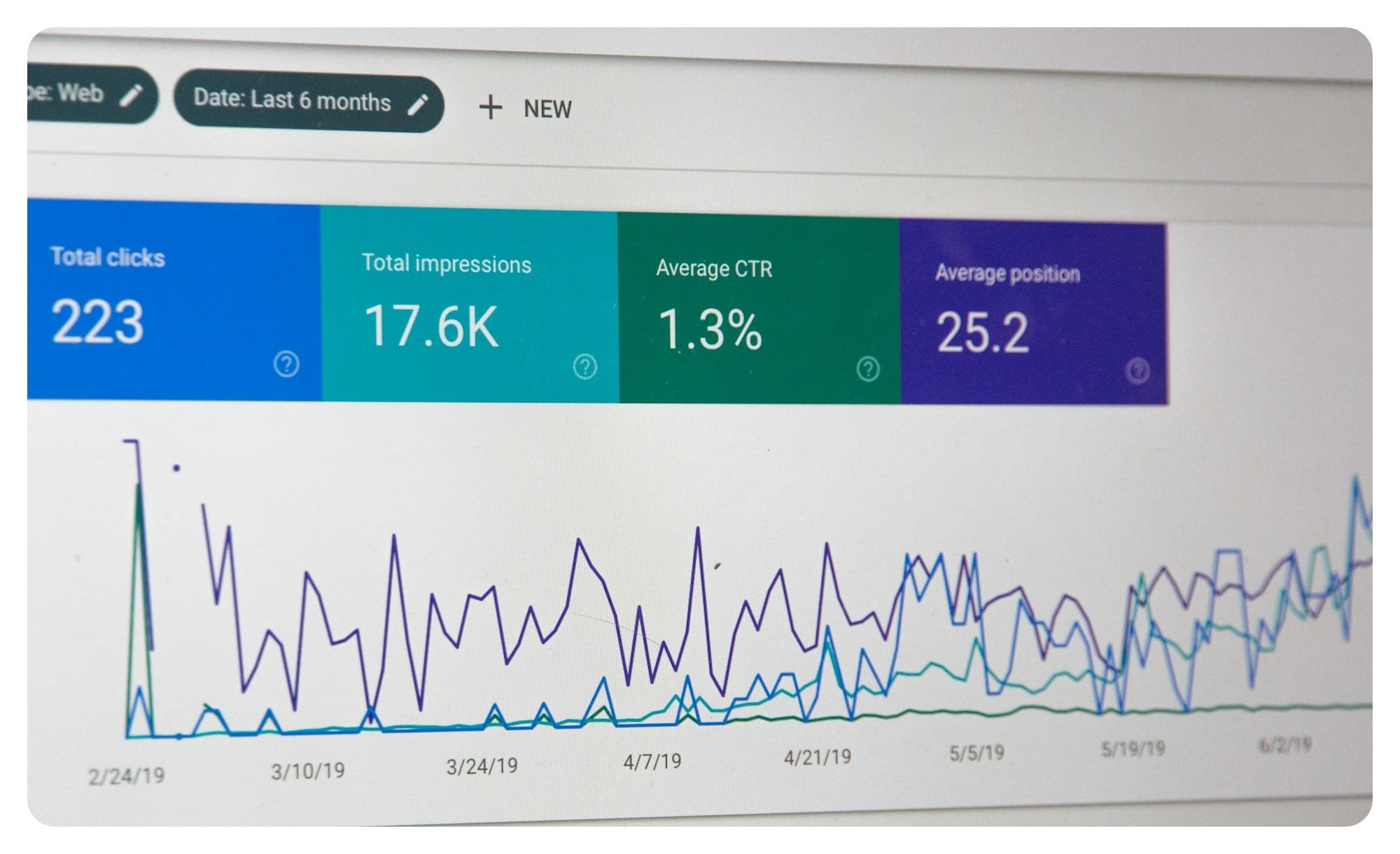
Finally, a rather unique way to understand your competitors' key differentiators (especially in the financial service industry), is through customer acquisition and retention strategies.
Whether it's through full-blown advertising campaigns and loyalty programs or simple customer relationship management, having a solid customer acquisition and retention strategy is essential for most financial service businesses to remain competitive and bring about long-term success.
Analyzing these campaigns and efforts can provide incredible insights into industry trends, customer preferences & behaviors, and existing unique selling propositions (USPs). This all can provide your business with valuable insights to refine its approach and selling proposition, adapt to the dynamic financial service market, and deliver enhanced value to customers.

Therefore, after conducting a deep competitor analysis, your business can easily map out the various gaps and opportunities that lie in the competitive marketplace currently. Look for unmet customer needs or underserved segments that competitors may overlook, and explore areas where emerging technologies or regulatory changes create new possibilities!
Finally, once you determine your business's ideal customer profile, desired brand identity, and the current competitive field in your marketplace, your business can develop these key revelations into a well-established and optimal branding identity and marketing strategy for your business!
2) Establishing your Brand Identity
Laying a strong foundation is essential for the success of any business venture; the same applies to creating a brand for the business. Many brilliant marketing and branding campaigns have gone unnoticed as they don't align with the authentic identity and value of the business, fostering distrust and dissatisfaction among customers.
To experience sustainable, long-term growth off of your brand, we must ensure that your business has established a compelling brand identity and value proposition first.
a) Set your Mission & Value Statements
Establishing a mission statement is crucial, as it will serve as the cornerstone around which your company's brand identity is constructed. It outlines the objectives of the organization and how it plans to achieve them.

Crafting a compelling brand story further enforces your business's purpose and mission. It is one of the most efficient ways to establish a robust brand identity; especially if it humanizes the brand, and connects with the target audience's aspirations and emotions.
Communicating the core values is also vital, for it aligns with the expectations and priorities of the target audience. Communicating the right company values in the right way can play a huge role often in forming a robust community behind your brand.
A prime instance is the Fintech startup, Monzo, which demonstrated transparency in their communication across all their platforms; allowing customers to intrinsically build a bond of trust with the brand.
No information's been exposed outside Monzo, and this data hasn’t been used for fraud.
— Monzo 🏦 (@monzo) August 5, 2019
You should update your app, and we're emailing everyone that’s been affected to let them know they should change their PIN as a precaution.
Read our full update 👇https://t.co/cKf5p5I87w
An unbeatable competitive edge for the company is a well-defined mission and value proposition that directly helps your client, sets you apart from the competition, and offers a long-term hook. Correctly setting the right missions, values, and brand messaging through the insights collected from market research will help create a solid base for redefining your business's brand identity!
b) Build a Visual Identity
Start with designing a simple yet visually appealing logo, representing your business' personality and values. This is a crucial element in the branding journey, as the logo of a company becomes the basis of its visual identity.
Having the right color schemes that evoke the right emotional response from your target audience, and selecting suitable fonts that complement the brand's tone are all very powerful cards to play in complementing the brand's identity.
Consistently following the selected visual profile of your brand through your business's channels such as blogs, ads, and social media posts allows your business to establish a recognizable identity over time.

A good visual brand creates a more lasting impact on your audience and improves your business's brand recall; providing a decisive edge against your competition in the market.
c) Internal Branding– Employee Branding
This is often the most overlooked, but critical element to establishing a strong brand identity, especially in such a competitive and dynamic industry.
Effective internal communication is an important strategy in employee branding. It involves engaging employees in activities that demonstrate your brand's values, bringing employees to workshops that highlight their pivotal role in the brand's success, and reinforcing company values, particularly at the management level. This fosters a deep understanding among employees about the brand and their crucial role as brand representatives.

Employee Advocacy Programs also empower employees to be brand advocates; further advancing the brand's reach and credibility.
By ensuring the brand's values are authentic and aligned with the needs and emotions of the employees, your business can institute positive growth and awareness for your brand. Internally recognizing employee-created content encourages employees to promote the brand on their social networks through blogs, social media posts, etc.
Introducing such programs can further spread the values of your business and institute a positive image of your business among potential clients.

Aligning external Brand Identity with Employee Branding is an incredible way to ensure a more authentic and compelling customer experience, reinforcing the brand's positive image in the financial service marketplace.
3) Executing Marketing Strategies
Executing effective marketing strategies will help in advancing your brand identity to your vast target audience, and help build increased loyalty and engagement with your brand in the process.
Optimal marketing strategies for such a broad industry can vary among the types of financial services and the business's model and market positioning. Hence a great finance marketing strategy depends on great data analytics that helps to specifically curate effective marketing efforts for that business in particular.
However, no matter the condition of your business, these 5 most effective marketing strategies are a good place for any financial service business to start and benefit from.
a) Content Marketing
Content Marketing is the distribution of useful content such as blogs, webinars, newsletters, videos, etc, that attracts current and potential customers.
This is an especially effective marketing strategy to utilize among financial service businesses, as financial services tend to come with a weary and sensitive approach among customers, and hence building a strong sense of trust and credibility is vital in improving customer experiences and conversion rates.
Therefore, consistently exploiting opportunities emerging among your target audience and geographies through educational and relevant content for your target demographic is a great marketing strategy to attract more customers and form trust around your brand.
Wise demonstrates the effectiveness of content marketing perfectly. By specifically exploiting the pain points present in the market through their blog posts, such as, "How to close a NatWest bank account", Wise could propose itself as a cost-effective alternative to other traditional banks, with superior money transfer services. Hence with their strategic and specific coverage of useful content, Wise maximized customer acquisition through content marketing.

b) Interactive Marketing
Interactive marketing is a wide array of strategies that encourage deeper customer engagement with the business's product or service.
Whether this be interactive service tools (eg: calculators), free trials, or immersive service experience, this form of marketing captures the audience's attention, and effectively portrays the experience of utilizing your product or service.
This is a very efficient, and increasingly popular strategy utilized across many industries recently. And with increased engagement, this marketing strategy helps boost conversion rates and helps in gaining instant feedback by gauging customer responses to the campaign.
A brilliant example is Klarna's disruptive marketing strategy of holding interactive events such as the "immersive and playful retail space for shoppers"– House of Klarna or "the World’s First ‘Pup-Up’ Grooming Salon - for Both Dogs & Owners--Who's A Good Shopper (WAGS), successfully painting the picture of Klarna providing a more sustainable and smooth shopping experience, and build a deeply emotional and personal connection with shoppers.

c) Social Media Marketing
Social media marketing is a marketing strategy that aims to build the business's brand and increase sales and website traffic through consistently publishing posts that engage with target customers on social media.
With over 60% of the world's internet users utilizing social media, leveraging social media to build loyalty and engagement seems like a no-brainer.
Social media post strategies include influencer collaborations, client success stories, stackable insights, and many more; whichever strategy your business decides to approach, it should have the ultimate goal of enhancing brand awareness and fostering deep customer connections.
Chime greatly benefits from this strategy, as seen through their elaborate efforts with their social media posts; with funny and relatable content posted on Instagram and Twitter, engaging video series on YouTube, and 'work-life at Chime' posts on Linkedin.
Chime's YouTube Video Series: Ball On A Budget
d) Search Engine Optimization (SEO)
SEO involves multiple practices to boost the appearance and engagement of your website on search engines such as Google.
With a lot of innovative breakthroughs emerging in this dynamic financial service industry, establishing a brand of authority and increased brand awareness plays a pivotal role in your business standing out and positioning it for significant growth.
SEO is the perfect marketing strategy to achieve these objectives; as not only does it improve website traffic and conversion rates, but consistently ranking high on the search engine for a vast range of topic-related search queries immediately positions your business as a reliable and authoritative expert in your target audience's eyes.
Take Chipper Cash for example, the company's effective SEO marketing campaigns generated an astounding 1.6 million new website visitors within a little over a year, gaining 60,000 new visitors per month. This allowed Chipper Cash to maintain healthy growth and survive through the economic recession and the bear fintech market, all while becoming one of the most successful companies in Africa.

e) Brand Storytelling
Brand storytelling is an emerging marketing strategy that uses narratives to establish emotional connections between customers and your brand.
As mentioned above, it involves communicating your business's mission statement, core values, or success story in a more engaging manner that appeals to your target audience's sentiments and reliability.
This marketing strategy is an increasingly powerful and relevant strategy to use for brand loyalty, with 71% of consumers, and 83% of millennials preferring to support brands they feel share their values, according to a 2021 consumer culture report. It can be achieved through a variety of content avenues, such as ads, video series, banners, etc.
An excellent, yet simple example was Netflix's brand story campaign. Netflix hosted a billboard saying "Don't give up on your dreams. We started with DVDs", which highlighted their core value of "seeking excellence", which also evoked a sense of inspiration among the audience; increasing their brand awareness through social media engagement, and customer loyalty towards the brand.

4) Maintain High Customer Retention & Brand Awareness
Despite the initial success of your business's digital branding campaign, it will all go to waste and get forgotten by your audience if you don't maximize the efficiency of your efforts.
Implementing some of these given practices would be a great help in maintaining a high degree of brand awareness and customer retention rate for your business.
a) UX Design
A great user experience in your website and sales funnel is integral in bringing in returning customers. As potential customers usually don't convert in their first point of contact with your business, establishing a good impression in their multiple interactions with your business is essential to maximize your conversions and brand awareness. Appropriate strategies may vary based on your business-specific circumstances and opportunities, which could be determined through in-depth market research.
However, there are 9 basic UX strategies financial services must consider:
1) Focus on a clear and intuitive navigation menu
2) Implement data visualization
3) Provide a steady stream of educational content with a consistent tone of voice
4) Mobile-friendly website optimization
5) Integrate interactive website tools and elements
6) Reduce jargon and content complexity
7) Evoke emotions through copy
8) Streamline the onboarding process
9) Utilize a consistent visual profile across all channels.

b) Email Marketing
Utilizing targeted email campaigns, preferably personalized to your customer's preferences and behaviors is a great way to ensure your business' brand stays on top of their mind. This requires consistent delivery of content in the form of useful newsletters, personalized financial tips, updates on account activity, or exclusive offers and programs.

c) Ads
Digital advertisements are a brilliant way to maximize your conversions, given that it is treated as a supplement to your marketing campaigns. If your business successfully executes content marketing and branding strategies first, the build-up of goodwill from your useful content, and good brand image will more than likely drive impressive conversions and efficiently squeeze most of your potential customers in from paid ads.
As said perfectly by Alex Hormozi ($100M CEO, philanthropist, and investor), "When you make good content, it makes everything else work better".
To maximize paid advertisement performance, your business can conduct a/b testing to experiment and determine the best call-to-actions, ad creatives, and headlines to use. Optimizing landing pages from the ads to be seamless, user-friendly, and persuasive is also crucial for driving conversions and brand engagement. Finally, maintaining a consistent visual profile in the ad campaigns for your business's visual brand across other channels would further improve conversions and brand recall.
Take GoHenry for instance, a banking platform for kids that optimized its landing page through persuasive copywriting, and countering the users' pricing objection by highlighting their free trial offer, and the free features bundled with GoHenry. This allowed GoHenry to experience a 36% increase in signups from their landing page. GoHenry also used a/b testing to determine the most efficient ad creative, boosting conversion rates from Facebook ads, by 191%.
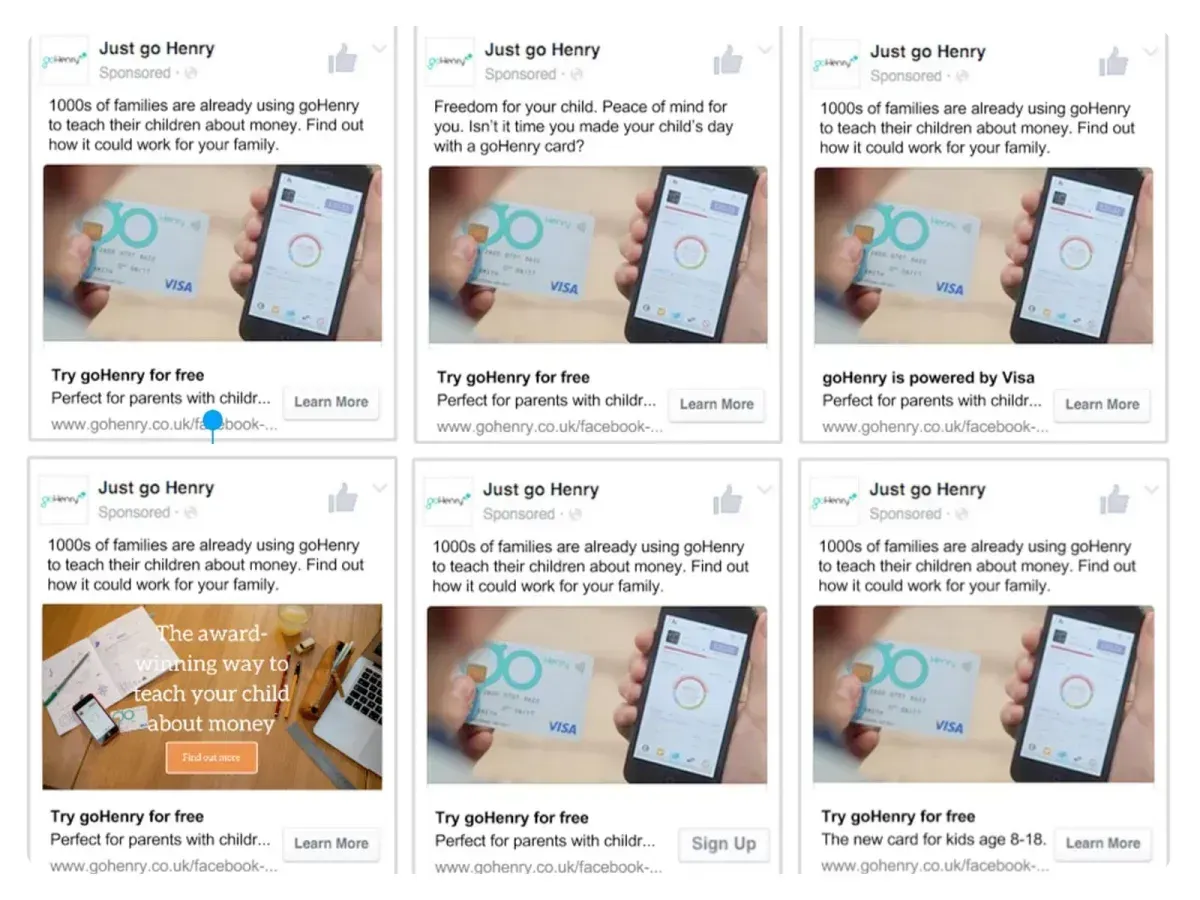
5) Conclusion
A lot of information and valuable insights have been dropped in this one post, but don't start feeling intimidated by it!
This article was divided into 4 parts:
1) Determining your Optimal Brand Identity through Market Research
2) Establishing your Brand Identity
3) Executing Effective Marketing Strategies
4) Maintain High Customer Retention & Brand Awareness
Take one step at a time, and ensure you perform in-depth market research on your business correctly, as it would determine the level of accuracy and efficiency of your entire branding campaign.
But if you still seem underconfident and require more guidance tailored to your business's needs and circumstances, don't hesitate to click that "Book an Appointment" button. I and my team will be more than happy to conduct a free session to clear out doubts and strategize viable routes to take in your business's branding journey!


